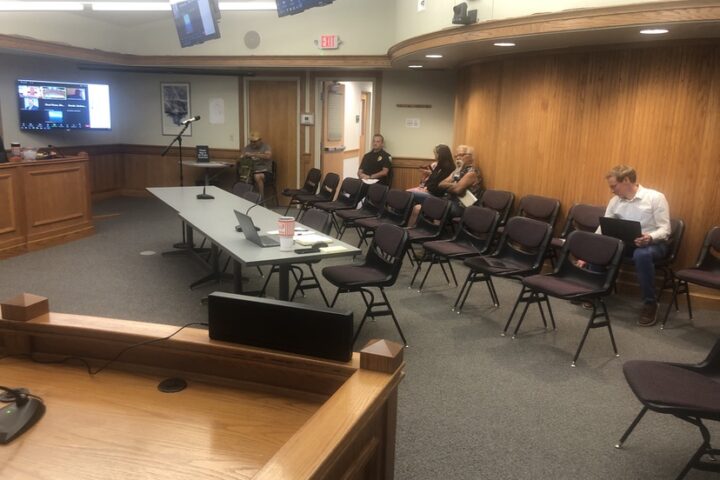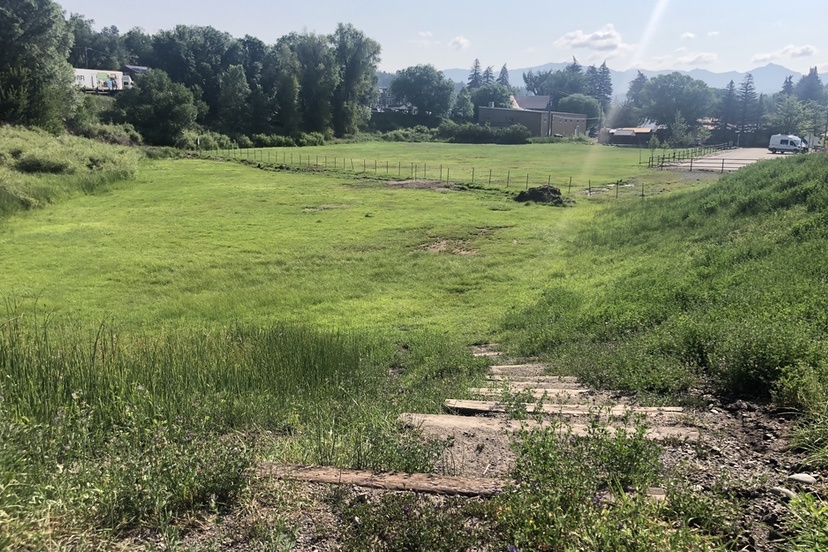I took the photo above on Monday morning, showing the athletic field at Town Park. The field is used not only by Pagosa Springs Middle School P.E. classes but also for events staged by various community groups — notably, the Chamber of Commerce.
A few weeks ago, the Town’s Community Development Director, James Dickhoff, presented to the Town Planning Commission, the idea of converting part of the playing field into a parking lot during the proposed reconstruction of Highway 160 through downtown. The Colorado Department of Transportation (CDOT) plans to replace the highway’s failing asphalt with a more-durable concrete surface, and has stated that most or all of the on-street parking — perhaps 180 parking spaces along the highway — will likely be unavailable during the project.
As mentioned previously, the Planning Commission voted unanimously in opposition to building a parking lot in the athletic field, even though the designated portion of the field had been described as “underutilized” due in part to poor drainage. The suggested parking lot would have allowed for 65 parking spaces. (Another sketch allowing for only 35 spaces, shown below, appeared at a later date.)
I had noticed that, around this same time, a deep ditch had been dug across the athletic field, perhaps to address the drainage problems? I found myself wondering if a decision had already been made, by someone, to construct the parking lot?
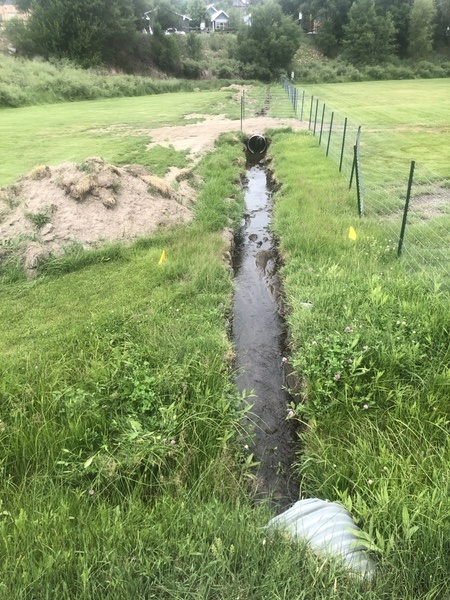
I assumed a final decision about the parking lot would be made, eventually, by the Town Council.
At the July 18 Council meeting, a decision about the Town Park parking lot was on the agenda, and we listened to comments from several concerned citizens — mostly Pagosa Springs Middle School staff and parents — asking that the playing field remain a playing field. The two school buildings face a central, paved ‘playground’ of sorts, but it’s not really suitable for physical education, save for three older basketball hoops and a small climbing wall.
Didn’t the Town have other options for parking during the two-year project… other than the school’s main athletic field?
Middle School principal Chris Hinger mentioned the parking lot on Lewis Street owned by the School District, which gets little use during summer vacation.
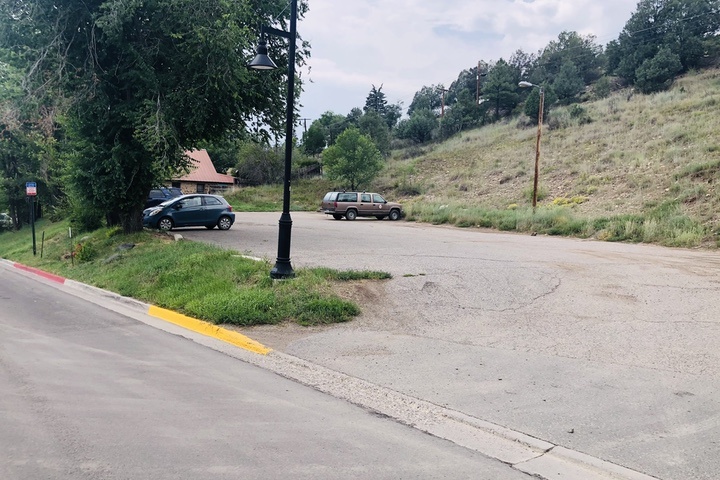
“There are twenty spaces there. And it’s approximately the same walking distance [to downtown shopping]. I think you guys have a whole list of ideas for parking. I would just ask that you scratch off Town Park, as an option.”
Council member Gary Williams posed a question Mr. Hinger.
“Is there any possibility of using your other part of your pavement, for parking?” Mr. Williams is here referring to the central, paved playground area on the school property.
Mr. Hinger: “I think we could do that, for the summer. Yes, absolutely. I don’t think that would be a problem at all.”
Mr. Williams: “Because I was thinking, we’re looking at 35 parking space at Town Park. And you’ve got 20 spaces, plus 15 spaces? The same number?”
Mr. Hinger: “I’d be all for that.”
If downtown is going to have a parking problem next year, it will be most noticeable during June, July and August. Tourist season. When school is out.
Several more people spoke, urging the Council to find other places for parking, and to preserve the athletic field for Middle School use. No one spoke in favor of the parking lot.
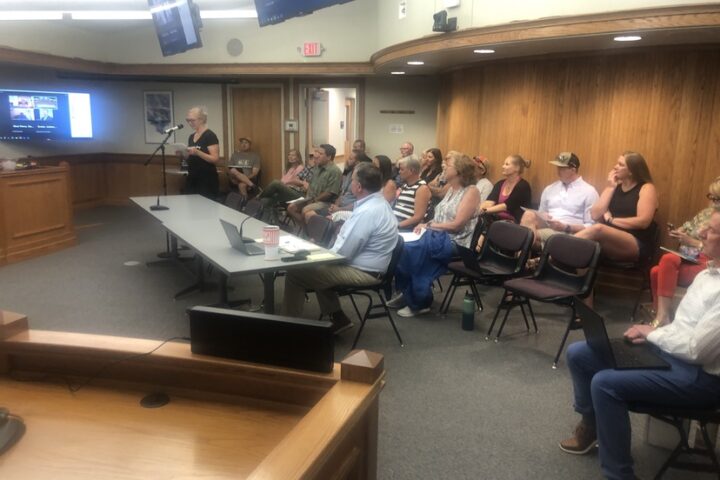
Then the Council took up the question, beginning with a presentation by Town Parks & Recreation Director Darren Lewis. It was immediately obvious that Mr. Lewis was feeling conflicted by his assignment, which was to bring the Council is recommendation for how large the parking lot ought to be.
“First of all, I want it to be known. I so respect everyone’s opinion that I just heard… I so appreciate them standing up, and what they are saying.
“I was given a task. We have construction coming through town on Highway 160. We’re looking for parking. It is not… I’m not looking to take away, or have any intention of trying to take away any green space, out of my parks. I will be very honest with you. I’m not.
“However, I was given a task, and this is what I’m bringing in front of you. An option. That’s all it is. An option.”
Mr. Lewis referred to the provided map, showing a 35-space parking lot tucked up in the southwest corner of the field, and explained that this particular portion of the field rarely gets used by the Middle School or by other community groups that use the field, and he felt the parking lot shown — either temporary or permanent — would not adversely affect most activities that take place on the athletic field.
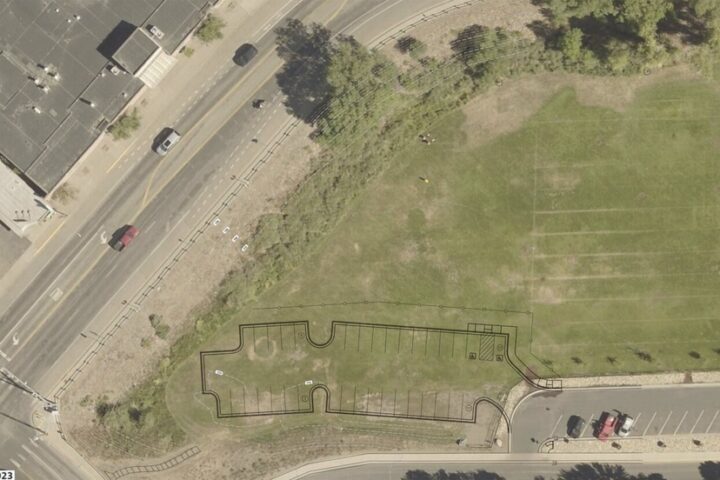
He also noted that such a lot, especially if it were a permanent fixture, could provide convenient parking for some the very events that happen in the remaining part of the field.
In the end, however, his tone made it clear that he was not recommending this course of action.
Here’s Council member Williams:
“I thought this was a very good idea, when I first saw it. I thought, ‘Well, that’s clever.’ And we talked about the need for parking.
“But the more I thought about it, the more I thought, it take a lot of political will, to not use existing park land to solve current problems… This is a small park, but it takes some political will to retain it as green space. And I’m in favor of not developing green space. I think the school has offered an alternative location for those parking slots, possibly.
“And I think, if you divide the cost of doing the asphalt by 35 spaces… that’s $7,000 per slot. And I thought, gee, could we approach individual property owners along 160 and arrange some temporary parking slots? Save some money?
“I guess I would encourage us all to look for more creative solutions…”
The Council apparently agreed, in general, with Council member Williams, because the motion to leave the entire athletic field as green space passed unanimously.
Then the room emptied out, except for the reporters in the room.
